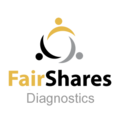Difference between revisions of "Initial Governance Audit"
(→Introduction) |
m (→Introduction) |
||
| (4 intermediate revisions by 2 users not shown) | |||
| Line 1: | Line 1: | ||
| − | You can try out the FairShares Governance Audit tool by visiting the website of the [ | + | You can try out the FairShares Governance Audit tool by visiting the website of the [http://www.fairshares.coop/wordpress/initial-governance-audit/ FairShares Association]. |
==Introduction== | ==Introduction== | ||
| − | The FairShares Association’s governance auditing and diagnostic tools were strongly influenced by a number of academic studies and articles developed at Sheffield Hallam University. Key papers include: | + | [[File:FSD-Small-PNG.png|120px||right]]The FairShares Association’s governance auditing and diagnostic tools were strongly influenced by a number of academic studies and articles developed at Sheffield Hallam University. Key papers include: |
* Ridley-Duff, R. J. (2005) ''Communitarian Perspectives on Corporate Governance'', Sheffield: Sheffield Hallam University. [http://shura.shu.ac.uk/2681/] | * Ridley-Duff, R. J. (2005) ''Communitarian Perspectives on Corporate Governance'', Sheffield: Sheffield Hallam University. [http://shura.shu.ac.uk/2681/] | ||
| Line 13: | Line 13: | ||
* Chadwick-Coule, T (2011). "Social dynamics and the strategy process: bridging or creating a divide between trustees and staff?", ''Nonprofit and Voluntary Sector Quarterly'', 40 (1): 33-56. | * Chadwick-Coule, T (2011). "Social dynamics and the strategy process: bridging or creating a divide between trustees and staff?", ''Nonprofit and Voluntary Sector Quarterly'', 40 (1): 33-56. | ||
| − | This initial audit presents | + | This initial audit presents six open questions to gather information about board members' awareness of governance challenges and regulatory processes. It is usually the starting point for further work on capacity building (using the [[Advanced Governance Diagnostics]] on this website, or the Governance Routemaster developed by Social Enterprise Europe). |
| − | The diagnostics are designed to move members from the FairShares Model – Level 1 (Coaching/Social Audit) towards Levels 2 (Design and Development) and 3 (Reconstituting the Enterprise). The diagnostics facilitate an understanding of stakeholders perspectives on the governance principles that are operating in selected organisations of interest. | + | The diagnostics are designed to move members from the [[FairShares Model]] – Level 1 (Coaching/Social Audit) towards Levels 2 (Design and Development) and 3 (Reconstituting the Enterprise). The diagnostics facilitate an understanding of stakeholders' perspectives on the governance principles that are operating in selected organisations of interest. |
==Interpreting Results== | ==Interpreting Results== | ||
Latest revision as of 11:09, 28 January 2019
You can try out the FairShares Governance Audit tool by visiting the website of the FairShares Association.
Introduction
The FairShares Association’s governance auditing and diagnostic tools were strongly influenced by a number of academic studies and articles developed at Sheffield Hallam University. Key papers include:- Ridley-Duff, R. J. (2005) Communitarian Perspectives on Corporate Governance, Sheffield: Sheffield Hallam University. [1]
- Ridley-Duff, R. J. (2007) “Communitarian Perspectives on Social Enterprise”, Corporate Governance: an International Review, 15(2): 382-392. [2]
- Coule, T. (2008) Strategies for Sustainability in the Voluntary Sector, Unpublished PhD Thesis, Sheffield Hallam University.
- Chadwick-Coule, T (2011). "Social dynamics and the strategy process: bridging or creating a divide between trustees and staff?", Nonprofit and Voluntary Sector Quarterly, 40 (1): 33-56.
This initial audit presents six open questions to gather information about board members' awareness of governance challenges and regulatory processes. It is usually the starting point for further work on capacity building (using the Advanced Governance Diagnostics on this website, or the Governance Routemaster developed by Social Enterprise Europe).
The diagnostics are designed to move members from the FairShares Model – Level 1 (Coaching/Social Audit) towards Levels 2 (Design and Development) and 3 (Reconstituting the Enterprise). The diagnostics facilitate an understanding of stakeholders' perspectives on the governance principles that are operating in selected organisations of interest.
Interpreting Results
Documentation on how to interpret the results of the Initial Governance Audit will appear here.
Return to FairShares Diagnostics
Return to Main Page
